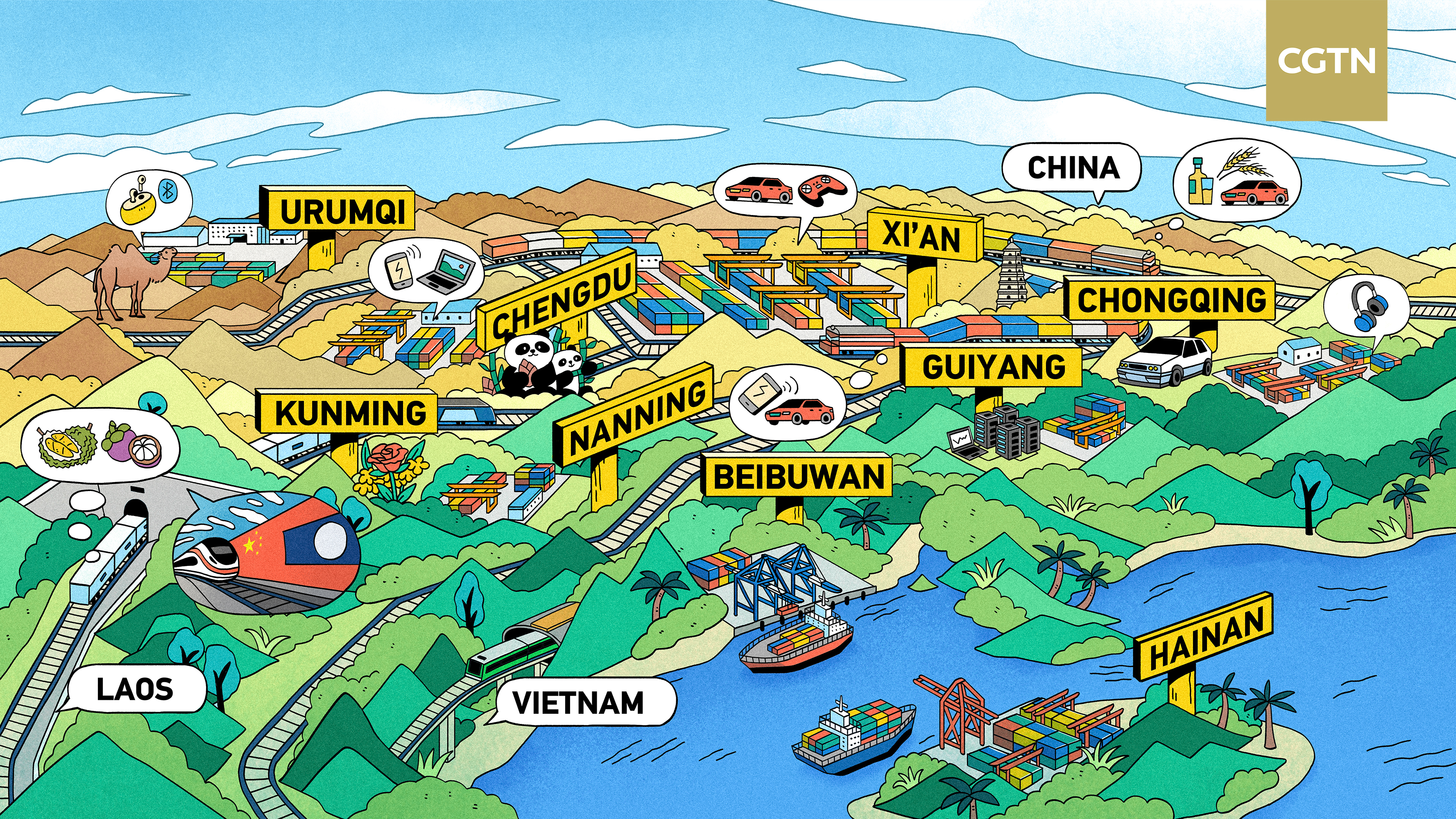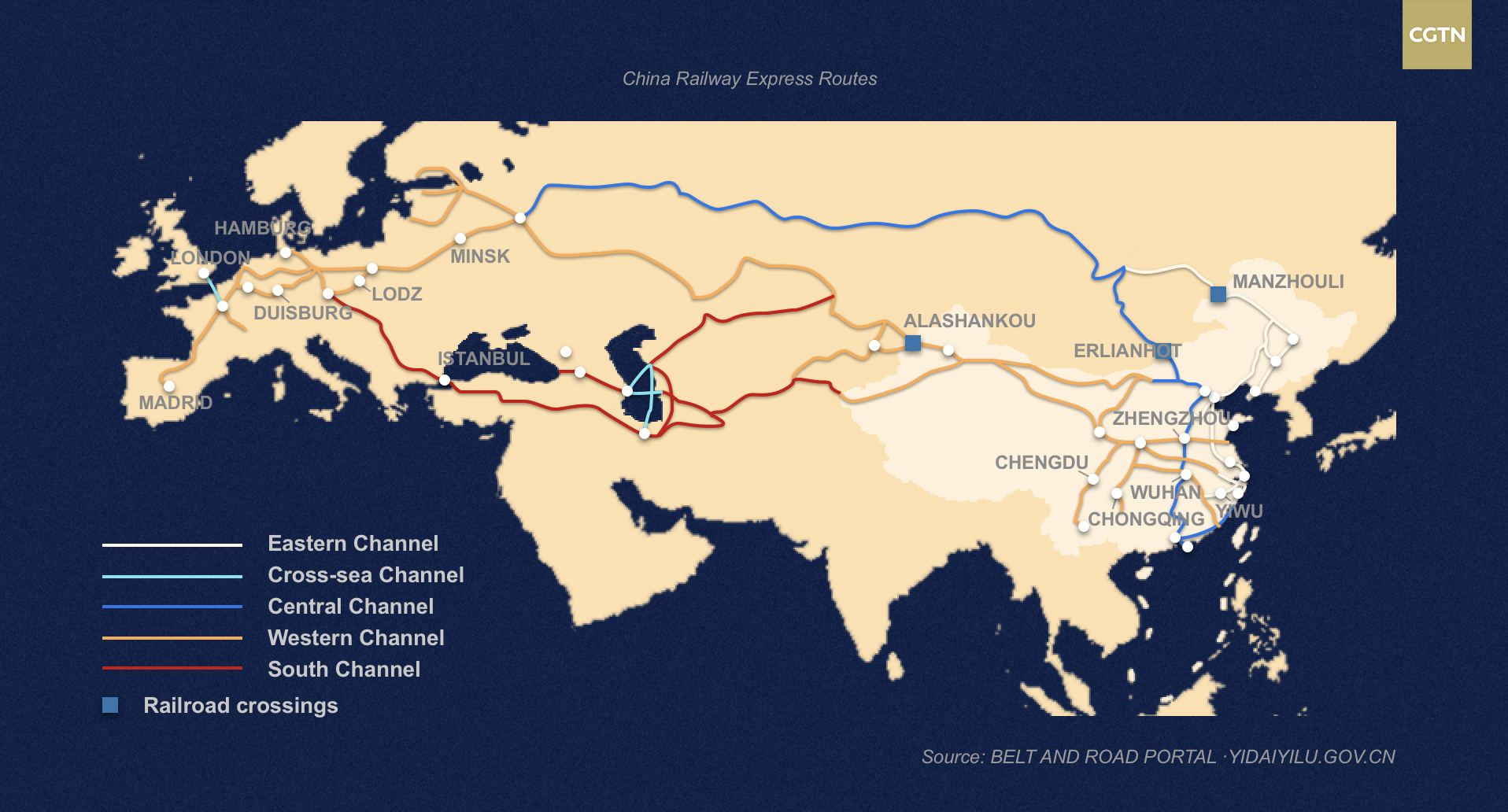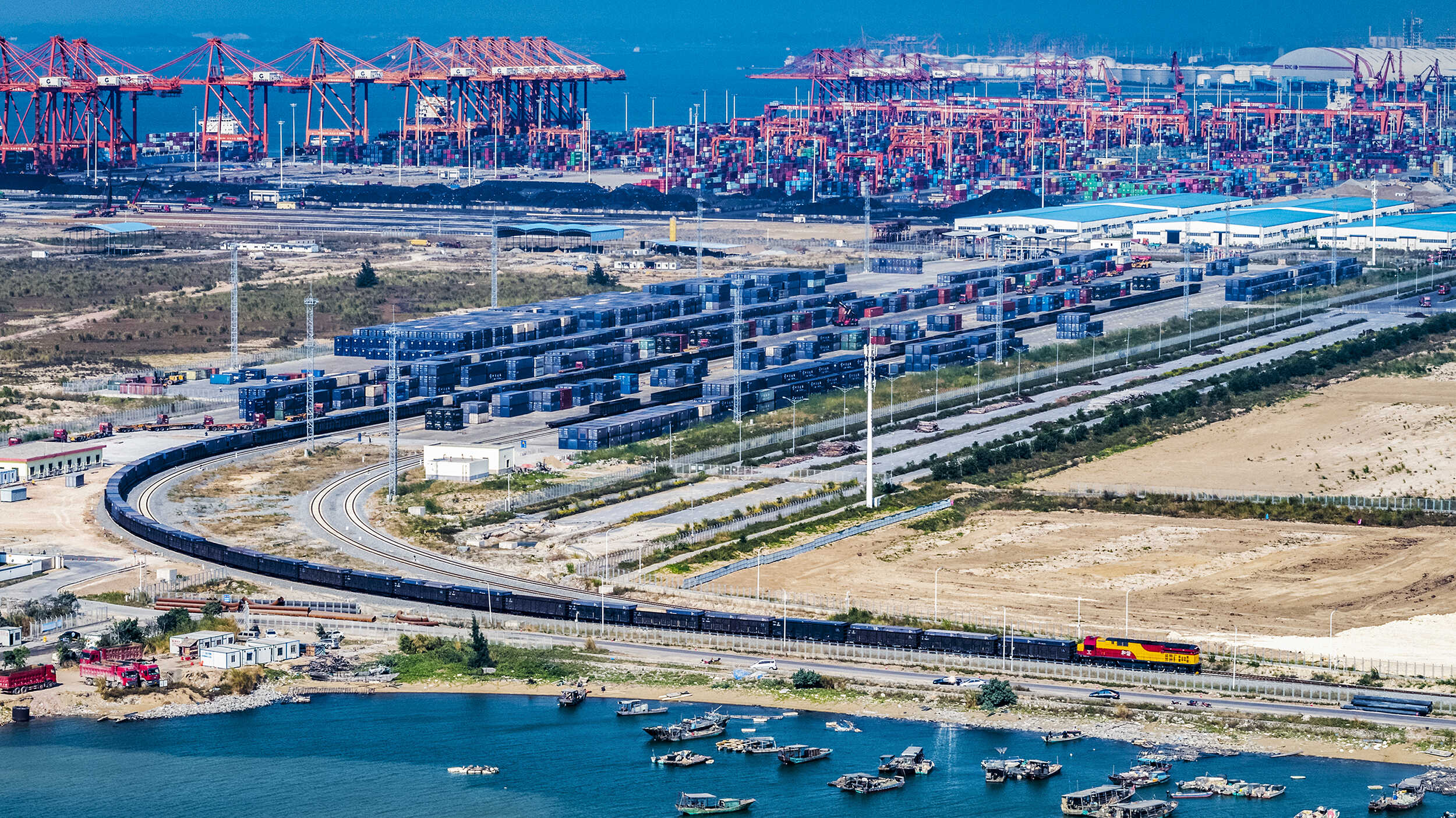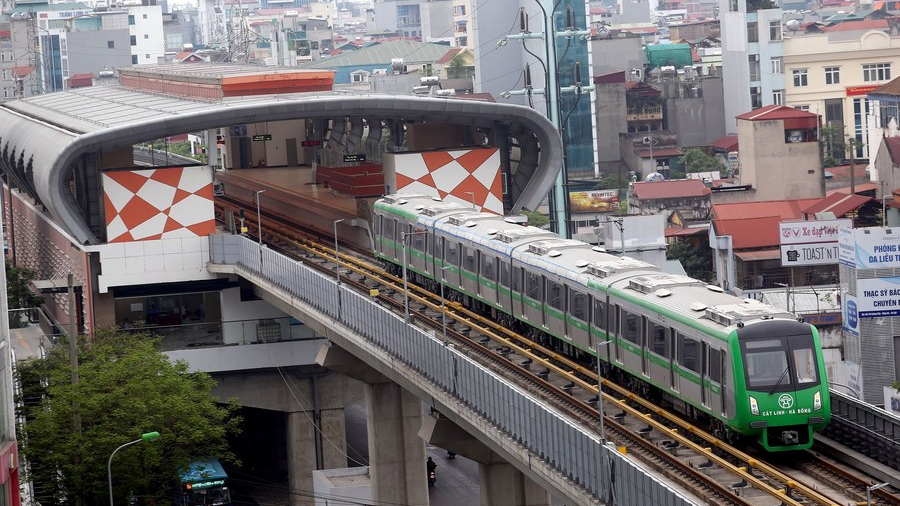Editor's note: On the 10th anniversary of the Belt and Road Initiative (BRI), let's take the railways in BRI partner countries and explore the projects as well as the local sights and sounds. In this article of the "Railways Along the Belt and Road" series, we focus on the interconnection between China-Europe Express and the New International Land-Sea Trade Corridor (ILSTC).

The China-Europe Express, a flagship project of the BRI, shipped goods worth over $340 billion in the past 10 years. /Shen Shiwei and Huang Ruiqi
The China-Europe Express, a flagship project of the BRI, shipped goods worth over $340 billion in the past 10 years. /Shen Shiwei and Huang Ruiqi
If you are a resident of Chengdu, place your orders and recline in style like a panda because two weeks is all that it takes now for a luxury car from Europe to get delivered by train to the capital of southwest China's Sichuan Province. And not just in China, but enterprises and individuals in many countries in Europe, Central Asia and Southeast Asia are now enjoying faster and cheaper deliveries – all thanks to the world's longest rail trade route, China-Europe Express.

A scene from the welcome ceremony for the 10,000th trip made by China-Europe freight trains operated by the China-Europe Express (Chongqing) in Duisburg, Germany, July 11, 2022. /Xinhua
A scene from the welcome ceremony for the 10,000th trip made by China-Europe freight trains operated by the China-Europe Express (Chongqing) in Duisburg, Germany, July 11, 2022. /Xinhua
Ten years ago, no one would have imagined that this flagship project of the China-proposed Belt and Road Initiative (BRI) would ship such a large volume of goods – it transported goods worth over $340 billion in just a decade, according to the National Development and Reform Commission. Within the China-Europe Express routes, the Yiwu-Madrid railway line is the longest rail link in the world – 13,000-kilometers through France, Germany, Poland, Belarus, Russia and Kazakhstan.
Today, the intercontinental railway link connects 112 Chinese cities and runs through more than 100 other Asian cities in 11 countries and regions. It also reaches more than 200 cities in 25 European countries and regions. Climate-friendly and reliable goods transport by rail has become increasingly important for global supply chains linking Europe, Asia and beyond.
Cities in Poland like Lodz have transformed into emerging logistics hubs. Duisburg, the largest inland port in Germany, has become a key terminal of the freight trains from and to China. Made-in-China laptops, mobile phones and new energy vehicles are the most popular products reaching Europe on this train, while Made-in-Europe high value-added fine wines, machinery and vehicle spare parts are being shipped to China and other Asian markets.

Besides the China-Europe freight trains, a southbound channel of the New International Land-Sea Trade Corridor (ILSTC) now connects China's inland cities with Southeast Asian countries. Goods are transported via railways, highways and waterways to the Beibu Gulf in southwestern China's Guangxi Zhuang Autonomous Region before being shipped to the rest of the world via sea.
The corridor, jointly built by provincial-level regions in western China and ASEAN members, offers a faster way to transport goods via China's east coast. Previously, goods from China's southwestern municipality of Chongqing took an average of 20 days to reach Vietnam – to Shanghai via the Yangtze River and then by sea. With the new rail route, the transport time has been cut to between four and five days.

The rail-sea routes of the New International Land-Sea Trade Corridor use ports in Guangxi's Beibu Gulf to offer a faster and cheaper freight transport option between western China and Southeast Asia. /CGTN
The rail-sea routes of the New International Land-Sea Trade Corridor use ports in Guangxi's Beibu Gulf to offer a faster and cheaper freight transport option between western China and Southeast Asia. /CGTN
As of May 2023, the corridor linking western China and ASEAN members has expanded its reach to over 300 ports in around 100 countries and regions. Together with the China-Europe freight trains, the massive railway network is providing a more convenient transportation route for Eurasian countries and promoting regional trade.
Seeing the huge potential, Thailand has accelerated its transport of rice, durian and natural rubber products to the Chinese market via the China-Laos Railway. In 2021, Vietnam launched its first rail freight service to Europe through railway systems in China, with the first container leaving Hanoi and arriving in Liege, Belgium.

Chinese-constructed Cat Linh-Ha Dong metro line project in Hanoi, Vietnam begins commercial operation, making it the first metro line in the country, November 6, 2021. /Xinhua
Chinese-constructed Cat Linh-Ha Dong metro line project in Hanoi, Vietnam begins commercial operation, making it the first metro line in the country, November 6, 2021. /Xinhua
Sailing the seas of global trade, goods and commodities now travel between Asia and Europe at a faster pace. Similar is the situation in southeast Europe and the Balkan region as the China-Europe Land and Sea Express, a route that connects the Piraeus, an important port in the Mediterranean Sea, the Balkans and the heart of Europe is taking shape. And the century-old railway between Budapest, the capital of Hungary, and Serbia's capital of Belgrade is being reinvigorated with Chinese high-speed technology, which also complies with European interoperability technical standards.